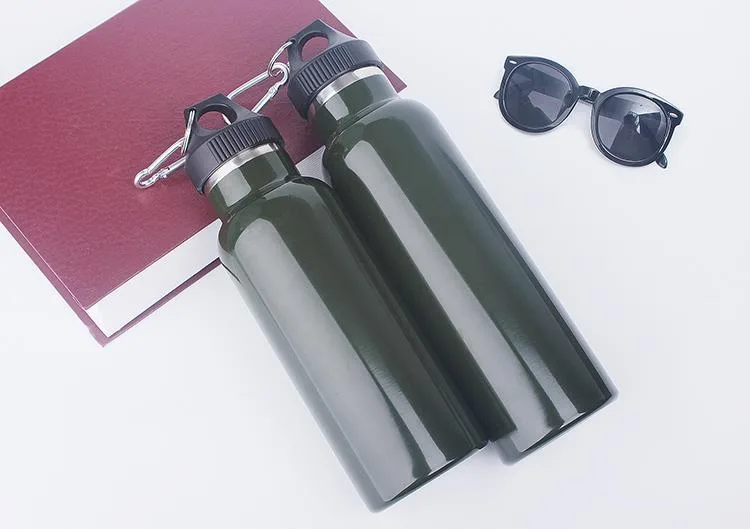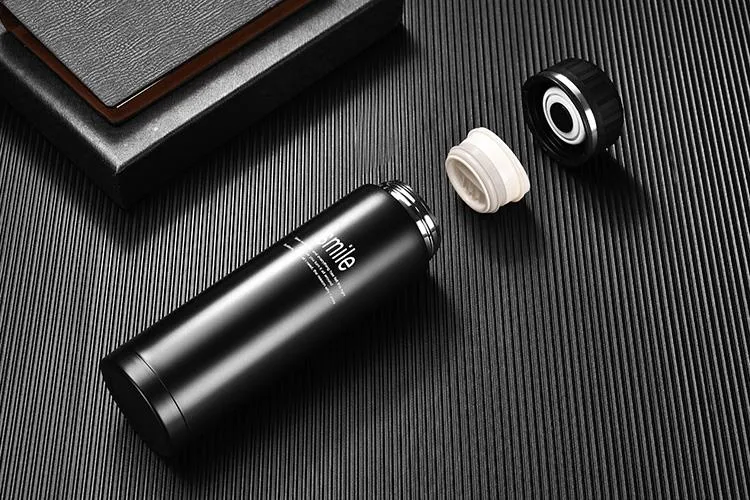Nước là nguồn gốc của sự sống!
Nhân loại theo đuổi dòng chảy của các nguồn tài nguyên nước để sinh sôi và phát triển ở cả hai bên bờ sông. Những tia sáng rực rỡ của văn hóa và trí tuệ đã trở nên ngày càng rực rỡ hơn trong những năm lịch sử. Từ đồ gốm đến đồ sứ, và bây giờ là tất cả các loại vật chứa vật liệu, nước uống không còn đơn giản như vậy nữa! Là một vật chứa nước uống, bình nước cách nhiệt đã được ngày càng nhiều người ưa chuộng vì hiệu suất cách nhiệt lâu dài độc đáo của nó kể từ khi xuất hiện trên thị trường. Nhưng chúng ta có thực sự chọn đúng bình nước cách nhiệt không?
Quan niệm sai lầm thứ 1: Chai càng nặng thì càng tốt
Nhiều người cho rằng độ dày vật liệu của bình nước giữ nhiệt có ảnh hưởng lớn đến hiệu quả giữ nhiệt của bình nước giữ nhiệt. Họ cho rằng độ dày của nhiệt càng lớn thì càng khó mất nhiệt. Vì vậy, khi chọn mua, họ sẽ so sánh trọng lượng của nhau trên tay và chọn loại nào. Trên thực tế, ý tưởng lựa chọn như vậy là không đúng. Chất liệu của bình nước giữ nhiệt, đặc biệt là lớp lót bên trong, thực tế mỏng hơn và tốt hơn, vì có một lớp chân không giữa lớp lót bên trong và lớp lót bên ngoài, có tác dụng cách nhiệt dẫn nhiệt của không khí. Vì vậy, sự mất nhiệt chính là sự truyền nhiệt giữa nước nóng và thành trong của túi mật. Thành trong của bình càng dày thì nhiệt độ nước nóng bị mất càng nhiều, nghĩa là khả năng giữ nhiệt càng kém.
Quan niệm sai lầm thứ 2: Thời gian giữ nhiệt
Khi nhiều người mua tham khảo, họ sẽ hỏi sản phẩm có thể giữ ấm trong bao lâu. Ở một mức độ nào đó, đây không phải là vấn đề khắt khe. Ví dụ: sau 8 giờ, nhiệt độ nước là 50 ℃và sau 10 giờ, nhiệt độ nước là 45 ℃. Thời gian giữ nên là 8 giờ hay 10 giờ?
Thời gian giữ nhiệt của bình nước giữ nhiệt chủ yếu liên quan đến ba yếu tố: dung tích, đường kính miệng bình và có nút chặn hay không. Do đó, khi mua, người mua hãy hỏi rõ ràng nhất có thể các thông số sản phẩm có liên quan và so sánh chúng trước khi mua.
Quan niệm sai lầm thứ 3: Phân biệt bằng nam châm
Nam châm có thể hấp thụ thép, đây là một ý tưởng phổ biến, nhưng điều đó có đúng không? Hiện tại, thép không gỉ là hợp kim sắt và thép, chứa nhiều nguyên tố, chẳng hạn như niken, không thể bị nam châm hấp thụ. Thép không gỉ austenit được sử dụng trong các bình nước cách nhiệt tốt không thể bị nam châm hấp thụ. Một số vật liệu không thể bị hấp thụ sau khi khử từ. Do đó, việc xác định vật liệu thép không gỉ chỉ bằng nam châm là không nghiêm ngặt và khoa học.



